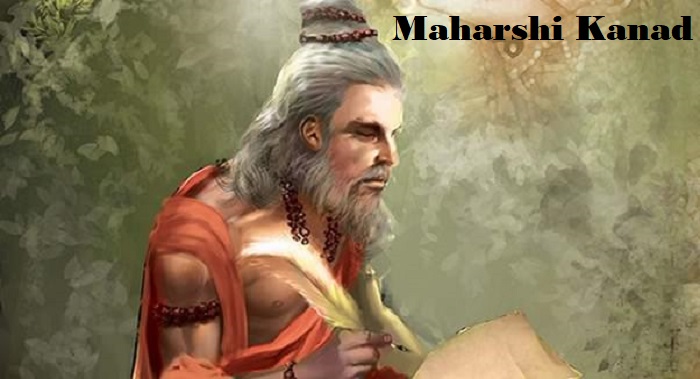Maharshi Kanad: The Propounder of Atomic Theory
Father of Atomic Theory: Maharshi Kanad
The contribution of Maharshi Kanad in the sphere atomic theory during ancient times is found unparalleled in modern times.
The idea that matter consists of indivisible units and cannot be further divided into smaller particles was first thought of by our ancient sages thousands of years ago.
Our sage scientists, however, gave this property of matter a spiritual meaning as according to them this smallest particle is pervading the entire universe.
This particle cannot be destroyed by any means and retains its original form under all situations (under physical or chemical change of matter).
Since it does not change even if there is a change in the form of matter composed of it; therefore, it is the soul of every living and non-living being. They called it ATMAN, a word that has a striking similarity with the word ATOM the name given to it by modern science.
Since these ideas are founded in abstract, philosophical reasoning, it was not called as a so-called scientific theory.
This basic idea of the atom was adopted by scientists thousands of years later because it could very accurately explain new discoveries in the field of chemistry and nuclear physics.
The Power Of Vedic Maths: Its Relevance And Use In India
Bhaskaracharya Discovered Principle Of Gravitational Force In India
Modern science calls this phenomenon as the big bang. According to modern science, just before the big bang, the size of the universe was approximately equal to the size of an electron only(that is 1/10000000000000 cms.).
In spiritual terms, this proves the belief of our saints that the Param Atma is ANANT both Ways, too small to be seen and also too big to comprehend.
Atoms can exist in one of two states: subtle, in which case they can fit in infinitesimally small spaces, and gross, in which case they have an extension and occupy a finite space.
Although atoms are made of the same basic substance, they can combine based on their eternal properties to produce any of five gross elements that are earth, water, air, space, and fire. This fundamental perception of our ancient seers has been used by modern science to propound their own theories.
Atomic and molecular theories were also utilized in explanations of chemical changes caused by heat.
PRASATSPADA proposed that the Tejas (heat) factor affected molecular groupings (VYUHA) thus causing chemical changes.
A spiritual understanding of kinetic energy appears in the texts of Prasastapada and the Nyaya-Vaisesikas who believed that all atoms were in a state of constant flux.
The concept of Parispanda was used to explain molecular and atomic motion, whether it be whirling, circling, or harmonic.
All the above laws of nature and much more were known to our ancient scholars, much before modern science.
Calling Maharshi Kanad as the father of atomic theory who envisaged the concept and thought about it FIRST thus, can not be diluted or questioned.
Courtesy Reference: The eminent historian, T.N. Colebrook



